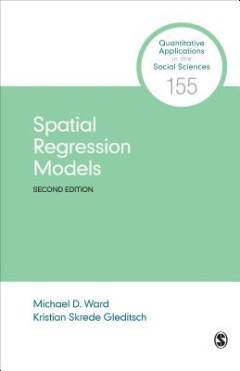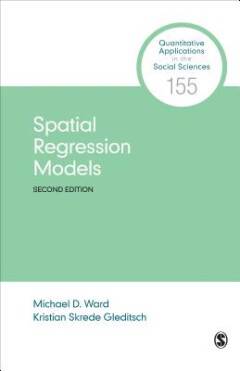
Door een staking bij bpost kan je online bestelling op dit moment iets langer onderweg zijn dan voorzien. Dringend iets nodig? Onze winkels ontvangen jou met open armen!
- Afhalen na 1 uur in een winkel met voorraad
- Gratis thuislevering in België vanaf € 30
- Ruim aanbod met 7 miljoen producten
Door een staking bij bpost kan je online bestelling op dit moment iets langer onderweg zijn dan voorzien. Dringend iets nodig? Onze winkels ontvangen jou met open armen!
- Afhalen na 1 uur in een winkel met voorraad
- Gratis thuislevering in België vanaf € 30
- Ruim aanbod met 7 miljoen producten
Zoeken
Omschrijving
Spatial Regression Models illustrates the use of spatial analysis in the social sciences within a regression framework and is accessible to readers with no prior background in spatial analysis. The text covers different modeling-related topics for continuous dependent variables, including: mapping data on spatial units, exploratory spatial data analysis, working with regression models that have spatially dependent regressors, and estimating regression models with spatially correlated error structures.
Using social sciences examples based on real data, Michael D. Ward and Kristian Skrede Gleditsch illustrate the concepts discussed, and show how to obtain and interpret relevant results. The examples are presented along with the relevant code to replicate all the analysis using the R package for statistical computing. Users can download both the data and computer code to work through all the examples found in the text. New to the Second Edition is a chapter on mapping as data exploration and its role in the research process, updates to all chapters based on substantive and methodological work, as well as software updates, and information on estimation of time-series, cross-sectional spatial models.
Using social sciences examples based on real data, Michael D. Ward and Kristian Skrede Gleditsch illustrate the concepts discussed, and show how to obtain and interpret relevant results. The examples are presented along with the relevant code to replicate all the analysis using the R package for statistical computing. Users can download both the data and computer code to work through all the examples found in the text. New to the Second Edition is a chapter on mapping as data exploration and its role in the research process, updates to all chapters based on substantive and methodological work, as well as software updates, and information on estimation of time-series, cross-sectional spatial models.
Specificaties
Betrokkenen
- Auteur(s):
- Uitgeverij:
Inhoud
- Aantal bladzijden:
- 128
- Taal:
- Engels
- Reeks:
- Reeksnummer:
- nr. 155
Eigenschappen
- Productcode (EAN):
- 9781544328836
- Verschijningsdatum:
- 30/04/2018
- Uitvoering:
- Paperback
- Formaat:
- Trade paperback (VS)
- Afmetingen:
- 140 mm x 213 mm
- Gewicht:
- 158 g

Alleen bij Standaard Boekhandel
+ 93 punten op je klantenkaart van Standaard Boekhandel
Beoordelingen
We publiceren alleen reviews die voldoen aan de voorwaarden voor reviews. Bekijk onze voorwaarden voor reviews.











